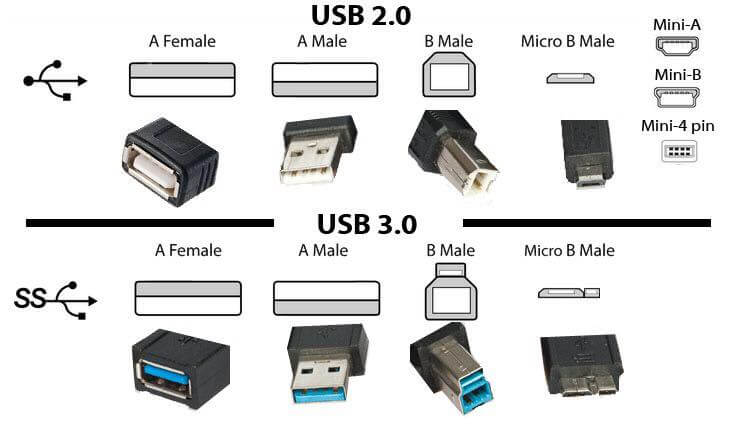Have you ever seen an advertisement for “Left Hand” USB cable and wondered just what the heck that even is? Well, you’ve come to the right place, because we’re going to tell you all about how to define and shop for angled cable assemblies.
Most cable types for common consumer usage come in straight lengths, with the connectors being parallel to the cable. These work in 99% of all use cases, because generally you can move devices a little bit to accommodate the bend radius (subject of another blog) of the cable you’re using. But in those cases where there is not enough clearance, you may need to have an angled cable end that accommodates your need. So how can you describe it?
To define it, you view the cable as if you are the device to be connected. For our purposes, we will be a disk drive with a USB 2.0 Micro-B connector. You can look at this chart to make sure you know what connector our disk drive has:

Now, this connector has a ‘standard’ way to be mounted to the printed circuit board inside our product, like so:

Therefore, if you are the disk drive, you view the cable in the direction it needs to go to clear the obstruction, and this defines the angle of the cable.





